By OLIVER WEBB
By OLIVER WEBB

It is paramount for visual effects artists to keep up with the latest tools and technology in an ever-rapidly changing industry. A wide range of software is available for artists in the VFX industry. Adobe After Effects, Maya, Blender, Nuke, Fusion and Houdini are some examples of the industry-leading software the VFX industry relies on to create exceptional visual effects. In the last few years, virtual production and AI have also become essential tools in the toolbox, playing a key role in shaping the industry’s future.
Blackmagic Design is one of the world’s leading innovators and manufacturers of creative video technology. DaVinci Resolve is an end-to-end post-production software that includes editing, color grading, VFX and audio post-production, making it the leading industry software used on more productions than any other software. Similarly, Fusion is an industry favorite and the world’s most advanced compositing software for visual effects artists and 3D animators. DaVinci Resolve and Fusion Studio have received major updates, and the new features offer endless possibilities.
Blackmagic Design acquired Eyeon’s Fusion in 2014. “It was 2017 when we ultimately did reveal Version 9,” explains Blackmagic Product Specialist Shawn Carlson. “The first thing we did was to make it cross-platform. There was a major version update [Version 9] that included unification of tools. Regarding the software’s types of tools, there were major tool revisions and updates in version 18 and then again in 18.5. Fusion 19 has added volumetric VDB support so you can import and composite with VDB volumetrics very fluidly in the same composite. More than 200 different 2D and 3D compositing and motion graphic tools are included.”
Blackmagic Design has released DaVinci Resolve 19, DaVinci Resolve Studio 19 and Fusion Studio 19. DaVinci Resolve 19 is a major new update that adds new DaVinci Neural Engine AI tools, over 100 feature upgrades such as IntelliTrack AI, Ultra NR noise reduction, ColorSlice six-vector grading, film look creator FX and multi-source editing on the cut page. For Fusion, there are new USD tools and multipoly rotoscoping tools, plus Fairlight adds IntelliTrack AI tracking for audio panning to video, ducker track FX and ambisonic surround sound. Fusion Studio 19 adds support for Volume VDB files, multipoly rotoscoping, a new multi-merge tool and an expanded set of USD tools.

There are slight differences between the two versions in terms of the Fusion tools within a page of the Resolve workflow and the Fusion Studio software that exists as a standalone. “For one example,” Carlson adds, “Fusion Studio 19 allows for render farms and to install multiple render nodes within the same installer. The ability to populate and distribute to a render farm across multiple nodes is one of the great advantages of the standalone version. We also added a multipoly node to 19, which allows you to control multiple polygon nodes together in one view when building a roto. We would use these tools in Hollywood and other industry hotbeds around the globe to roto paint out rig removal, sky replacement, set extensions, 2D paint, Intellitrack, or 3D camera track with point clouds for 3D object integration. We also have great looping and animation controls. The animation controls themselves are separated in two different windows.”
Major films and television series such as Game of Thrones, Breaking Bad, Only Murders in the Building, What We Do in the Shadows, Dumb Money, Avatar and the Harry Potter movies have all relied on Fusion. “Other benefits to a giant Hollywood production, or even a small production, is the cross-platform aspect because you have various collaborators working around the globe,” Carlson remarks. “They can all work on whatever platform is their favorite platform, and all deliver within the same software, and the software tools present themselves the same way across all three platforms. The ability to jump between any platform and continue in Fusion is all there. The permanent licensing versus the subscription model is also a big win for productions. Resolve has improved its licensing scheme to include activation codes. They are available to get after purchase immediately, then you begin to install, so you don’t have to wait anymore. The activation codes are flexible. It’s not node-locked.”

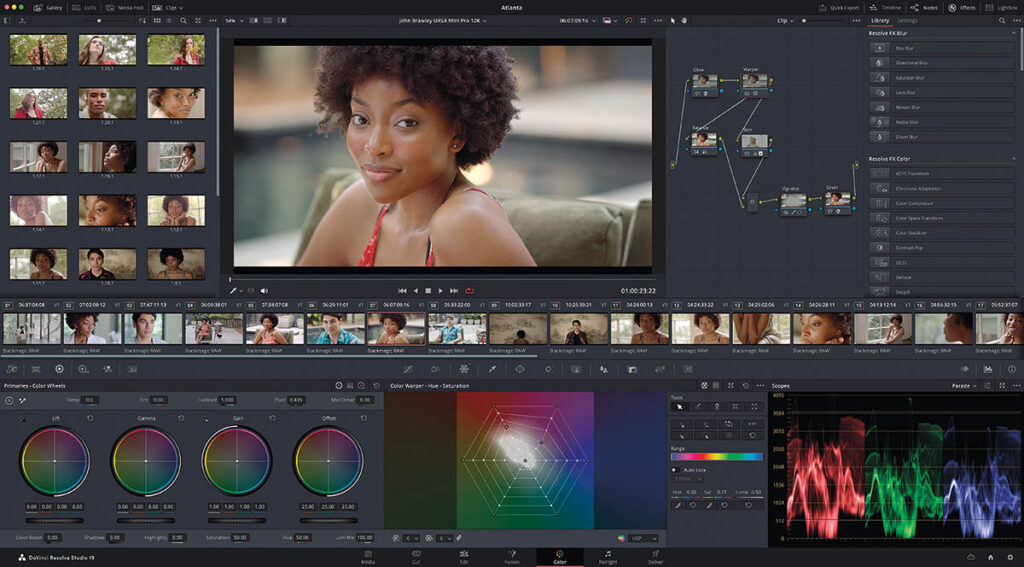
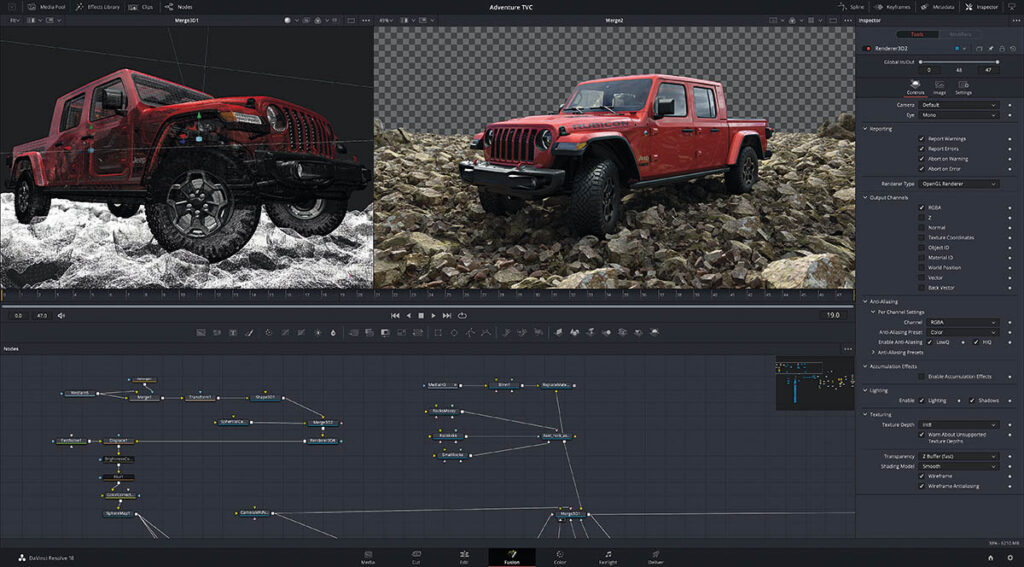
Fred Pienkos, Founder and VFX Supervisor at Muse VFX, explains that his team relies on Fusion for its proven speed and accuracy, enhanced by its mature integration with Resolve. “This combination empowers us to efficiently address our clients’ challenges in today’s demanding industry landscape. Fusion’s versatility allows us to maintain high standards while adapting to tightening budgets and accelerated timelines. By leveraging this toolset alongside our creative expertise, we continue to deliver compelling visual storytelling, meeting the current market’s artistic and economic demands.”
Senior Compositors at Muse VFX Kelly McSwain and Toby Newell rely on the software when working on projects. McSwain first started using Fusion when she started working at Muse VFX. “I had never touched the program before, and they assured me it would be easy to learn and translate my knowledge from other programs. They were absolutely right; working in Fusion has been a wonderful surprise for me.”
For Senior Compositor Toby Newell, affordability and practicality is first and foremost, so Fusion is his go-to software. “I don’t think we’re the only ones who look at the cost of renting licenses from other software companies as a major downside to using their products, especially when factoring in render nodes,” he explains. “Fusion is incredibly low-priced in comparison, and it’s massive that they don’t charge separately for render nodes with the purchase of a license. The ability to quickly scale up your render farm on any given project is a major obstacle for any visual FX company. The reality is that Fusion does at least 90% of what other software does. Anything it doesn’t do well hasn’t been a deal-breaker for us. They have a phenomenal user group that’s quick to offer helpful tools or workarounds if you encounter a problem. As someone who started as a compositor using Fusion 20+ years ago then spent quite a few years using Nuke, I’ve found it’s not that hard to train good compositors to transition to either. With the wide-scale adoption Resolve has seen, using software that’s integrated into it also brings quite a bit of appeal.”
Fusion was the obvious software of choice when it came to Muse VFX creating the effects for FX’s What We Do in the Shadows. “I like all of the custom tools that we’re able to make,” McSwain notes. “We’ve built some incredible macros that help us as compositors and add to the quality of work that we can do. I’m able to easily pull in what I get from 3D and roto with a click of a button, easily swap out old renders, and quickly enhance stock elements with just some of the macros we’ve been able to build.”
A project like What We Do in the Shadows doesn’t come along that often,” Newell adds. “Creativity starts from the top down, and the process isn’t always a straight line. Considering the range of work involved drastically differs from episode to episode. It often calls for a heavy amount of ‘on the fly’ problem-solving. There’s a lot of work required from our compositors as well as our 3D department. It’s the kind of work where you often can’t rely on widely adopted techniques. You end up having to throw the book out and start throwing things at the wall to see what sticks. Fusion is great in scenarios like this. It’s easy to get great first results quickly then refine them later. This allows us to give our clients multiple options in the time it often takes to get one.”

Christopher Hebert is Senior Director of Marketing at SideFX. SideFX is an Academy Award-winning industry leader in developing 3D animation and visual effects software, best known for its flagship product, Houdini. Founded in Toronto over three decades ago, SideFX has consistently pushed the boundaries of what’s possible in digital content creation. The company is known for its deep expertise in procedural workflows, allowing artists to create complex effects and animations with high control and flexibility.
With a team that blends seasoned developers, technical artists and VFX industry veterans, SideFX operates as a mid-sized company that punches well above its weight. “Despite its relatively small size compared to some of the industry’s giants, SideFX maintains a close-knit culture of innovation and collaboration,” Hebert says. “This allows the company to respond quickly to the evolving needs of artists and studios from major Hollywood productions to independent creators and game developers. SideFX’s influence extends beyond its software – the company is deeply involved in the media and entertainment community, regularly contributing to industry events, educational initiatives and collaborations that drive the field forward.”
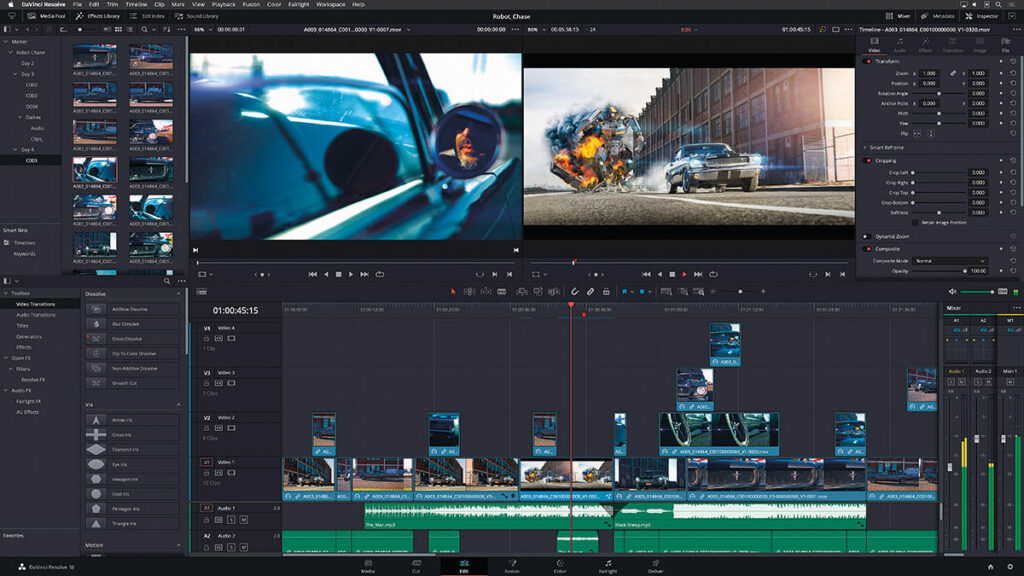
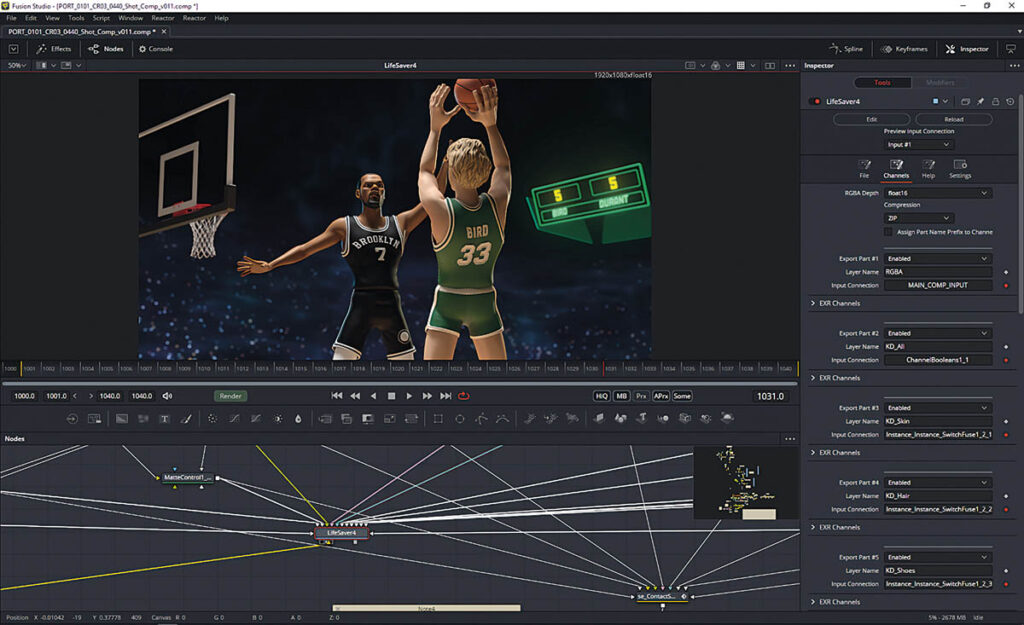
Recently, SideFX released Houdini 20.5, which brings a wide range of new features and enhancements. KineFX Rigging and Animation tools now feature tags, making it easier for riggers to set up procedural character and creature rigs using pre-built rig components. Animators will appreciate a new suite of tools designed to streamline the keyframing of character motion, making the animation process more intuitive and efficient.

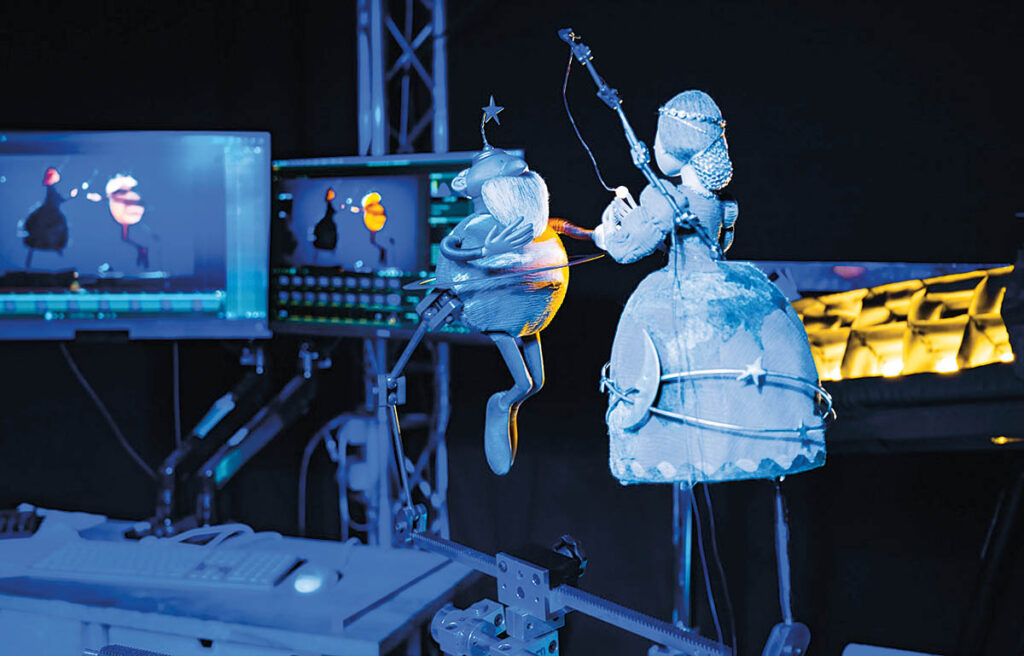 The stop-motion film The Inventor was edited and graded in DaVinci Resolve Studio. (Images courtesy of Blue Fox Entertainment)
The stop-motion film The Inventor was edited and graded in DaVinci Resolve Studio. (Images courtesy of Blue Fox Entertainment)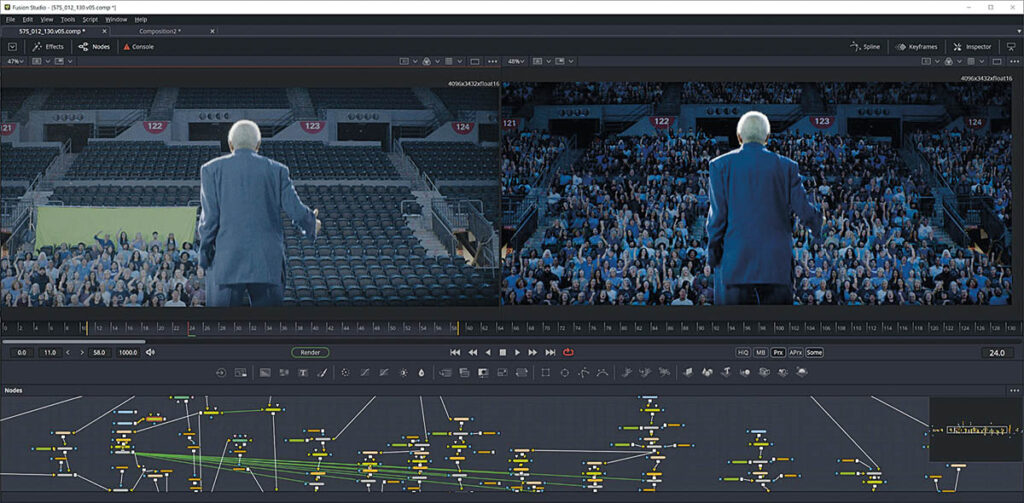
“Another major addition is the MPM (Material Point Method) Solver, which strengthens the software’s simulation capabilities for snow, soil and mud – allowing for more realistic and dynamic interactions and opening up new creative possibilities for artists working on natural environments,” Hebert says. “The brand new Copernicus feature set is a 2D and 3D GPU image processing framework that provides real-time image manipulation and is ideal for tasks such as building texture maps and setting up Slap Comps – providing a powerful and flexible platform for artists who need immediate visual feedback. These are just a few of the hundreds of new enhancements.”
As one of the leading software packages for VFX, Houdini appeals to major Hollywood productions for numerous reasons. First, it appeals to major film productions with its procedural nature, which allows studios to make rapid adjustments without starting from scratch. “This approach is particularly valuable in large-scale content creation, where tight deadlines and evolving creative directions are the norms,” Hebert notes. “The software’s ability to handle everything from large-scale explosions to intricate particle effects makes it a versatile choice for VFX artists needing reliability and depth. Houdini’s integration with production pipelines allows it to fit seamlessly into various studio workflows, further cementing its place in high-end VFX work. Beyond the software itself, SideFX is well-known for its incredibly responsive technical support, tight collaboration between its R&D team and studio customers, long-term product planning, and investment in community skill-building and knowledge sharing.”
Houdini 20.5 is helping to change the VFX landscape. Hebert highlights five key reasons how the software achieves this: Procedural Workflows Becoming the Norm, Integration of Real-Time and GPU Acceleration, Expanding the Scope of Simulations, Bridging the Gap Between VFX and Other Creative Industries, and Adapting to AI and Machine Learning Integration. “Houdini’s procedural approach allows artists to build effects and models using rules and parameters rather than manual step-by-step methods,” Hebert says. “This shift towards proceduralism reduces the time spent on repetitive tasks, making the creative process more efficient. Artists can iterate quickly, adjust on the fly and even automate complex tasks, which is essential in high-pressure production environments where constant changes occur. This trend democratizes the ability to create high-end VFX, making advanced effects accessible to smaller studios and independent artists.”
Hebert also notes that with the growing use of GPU acceleration, tools like Houdini’s Copernicus framework are transforming workflows by providing real-time feedback during the creative process. This is particularly important for VFX artists working on time-sensitive projects, such as episodic television or advertising, where turnaround times are tight. “Real-time capabilities are blurring the lines between pre-production, production and post-production, enabling artists to work more interactively and make decisions faster, ultimately improving the quality and pace of production.”
Houdini 20.5’s MPM Solver is a good example of how VFX software pushes the boundaries of what can be simulated digitally. By offering more realistic simulations of complex materials like snow, soil and mud, artists can achieve a higher level of detail and realism in their scenes,” Hebert explains. “These advancements mean that previously difficult or time-consuming effects can now be achieved more easily, allowing for more creative experimentation and enabling artists to bring their visions to life in ways that were not possible before.”
Unreal Engine is the world’s most advanced real-time 3D creation tool and is revolutionizing the VFX landscape by enabling real-time rendering, drastically speeding up the production process. Traditionally, rendering high-quality visual effects took hours or days, but Unreal allows for instant feedback and iteration. “This real-time capability also facilitates virtual production, where filmmakers can visualize and interact with CGI elements on set, merging the physical and digital worlds seamlessly,” explains Paul Martin Eliasz, Unreal Technical Director and Co-Founder at Umewe Collective. “Unreal’s high-quality rendering, paired with its powerful tools for simulation, lighting and animation, provides VFX artists with the flexibility to create photorealistic environments and complex effects more efficiently. The engine’s accessibility and continuous updates make cutting-edge VFX more affordable and adaptable, allowing studios of all sizes to compete at a high level. Additionally, its integration with other software through plug-ins and its open-source nature encourage innovation, fosters new creative possibilities in the VFX industry.”
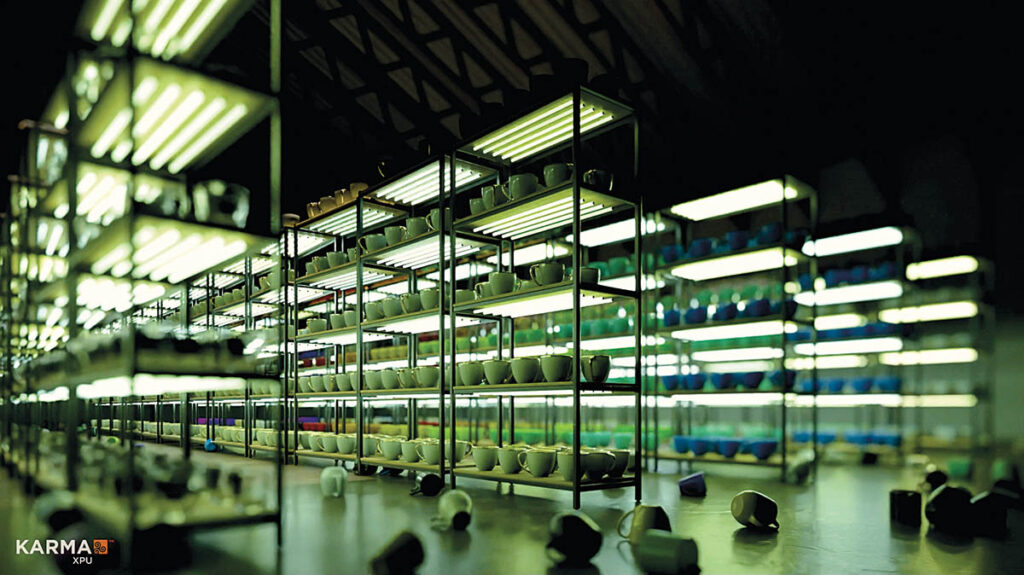
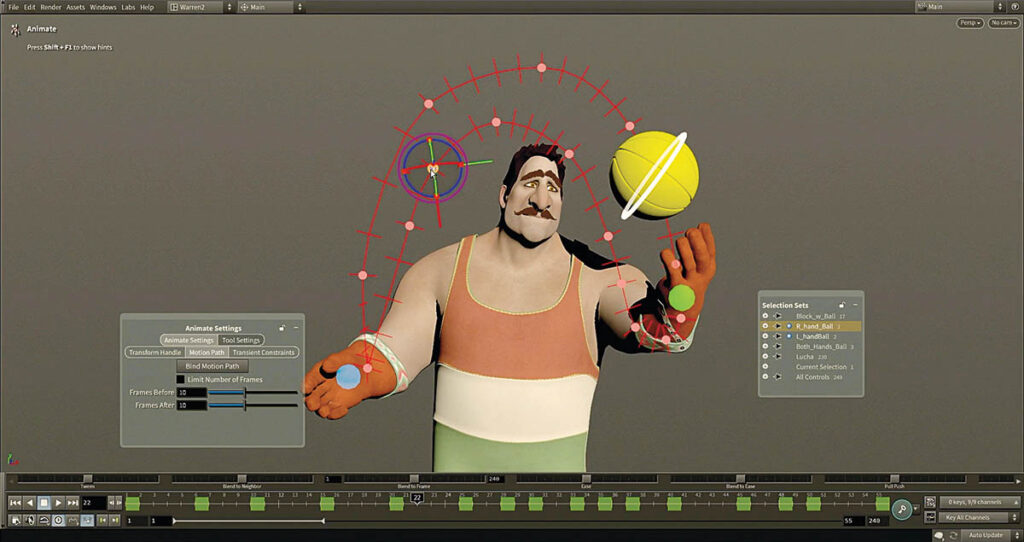
There are advantages when it comes to Unreal Engine. Productions using Unreal Engine benefit from real-time rendering, significantly accelerating the iteration process and reducing production timelines. “This real-time feedback enables directors and artists to make creative decisions on the spot, improving the overall quality and coherence of the visual narrative,” Eliasz says. “Unreal Engine also supports virtual production techniques, such as LED wall-based filming, where digital environments are rendered live on set, blending physical and virtual worlds seamlessly. This reduces the need for greenscreens and post-production compositing, saving time and costs. The engine’s photorealistic capabilities and vast library of assets and tools for animation, simulation and lighting, allow for high-quality results across various genres. Additionally, Unreal’s flexibility and integration with other industry-standard tools make it easier to adapt to different workflows. At the same time, its cross-platform compatibility ensures that assets can be reused across multiple media formats.”
Staying ahead of VFX trends and technological advancements is vital for those in the VFX industry, and constantly evolving software like Unreal Engine requires VFX artists and studios to continuously learn and adapt to new features, workflows and best practices. “This can be resource-intensive, requiring time and investment in training and experimentation,” Eliasz details. “Additionally, the demand for higher-quality visuals and more immersive experiences pushes the boundaries of current hardware capabilities, making it essential to stay updated with the latest advancements in GPUs, CPUs and other rendering technologies. The integration of new technologies like AI and machine learning into VFX also presents both opportunities and challenges, as it requires a deep understanding of these fields. Balancing the need to innovate while maintaining production efficiency and meeting tight deadlines is an ongoing challenge for the industry.”
McSwain agrees that one of the biggest challenges of keeping ahead is growing with the latest technology as it’s evolving. “You’re learning or hearing of this new awesome tool, but then the tool itself is also learning, growing and improving all the time. When Fusion’s Magic Mask was first introduced, I was weary about the quality of results I would get based on other tools I’ve seen in the past. I used to treat it as a way to get a rough roto for a work-in-progress shot. Recently, I’ve used it multiple times very successfully with more refined details for final shots. It’s all about balancing your expectations and the reality of where the technology is at that moment in time.”
There are many tools and technologies available for visual effects artists, and Fusion and Houdini are just two examples of revolutionary software that have helped to shape the visual effects industry. New tools such as virtual production and AI machine learning are also becoming a key part of the industry. With a rapidly changing industry, staying ahead of the game is vital.